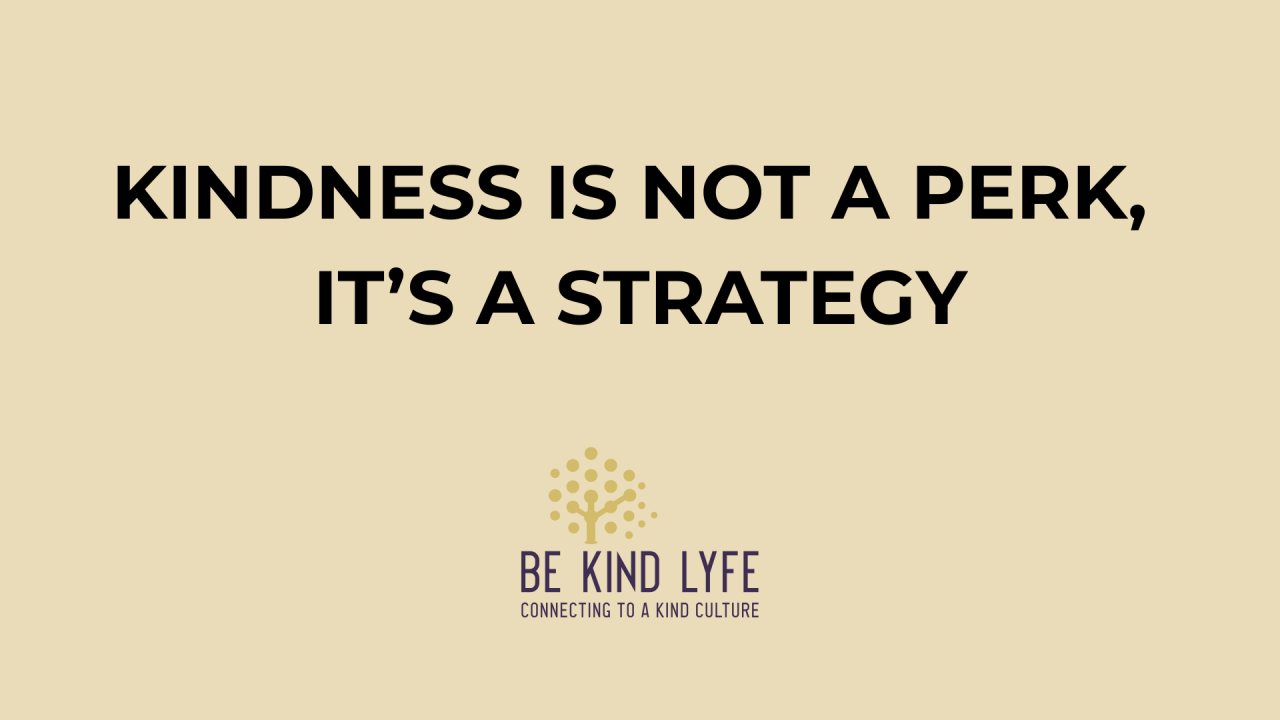The ROI of Kindness: Why Culture Is a Business Strategy, Not a Perk

We love to talk about kindness at work—usually in the abstract through inspirational hallway posters as the box we can check. In the "good" times we happily invest in culture initiatives and employee engagement, but when budgets tighten or performance slips, kindness and culture can be the first things that slip off the strategy list. It’s treated like fluff. Nice-to-have, however optional.
I’ve spent the last 15+ years working with companies across industries—from Fortune 50 giants to early-stage startups—and I’ve seen this truth play out repeatedly.
Kindness isn’t a soft skill. It’s a key strategy.
When organizations invest in psychological safety, inclusive environments, and human-first leadership, they don’t just feel better—they perform better. When a culture is KIND we see:
- Engagement scores rise
- Burnout drop
- Attrition drops
- Team effectiveness increases
- Leadership confidence soars
In one recent engagement, we saw a 10% boost in productivity and a measurable drop in burnout within six months—just by shifting leadership norms from control to connection. No major restructuring. No gimmicks. Just real, strategic empathy, open communication and team empowerment.
Enter: The 1% Rule
A core principle of the work we do is The 1% Rule—the belief that sustainable change is built on small, intentional improvements, done consistently. No grand overhauls. No change-for-change’s-sake. The disruptions are so small, that by the time the teams notice, they are enjoying the change instead of fighting it.
No “90-day transformations.” No big, flashy rollouts. Just:
- Clear leadership behavior
- Better feedback loops
- A consistent culture rhythm
- Measurable, human-centered progress
The 1% Rule isn't sexy and probably won't make headlines. But it does change cultures and deliver business success.
So Where Do We Start?
We start by adjusting the way we communicate.
Not “How do we boost productivity?”
Instead “What’s getting in the way of people doing their best work?”
Not “How do we retain talent?”
Instead “Have we built a culture where employees feel safe and want to grow with us?”
Not “How do we drive change?”
Instead “Are we supporting psychological safety and encouraging psychological bravery?
Not "What went wrong with this project?"
Instead "What can we all do differently, next project, to achieve our desired outcome?"
That shift in language changes everything. Because when people feel seen, trusted, and supported—they perform. They lead. They stay.
The Bottom Line
If we want innovation, resilience, and results—we have to treat culture like the business lever it truly is. Not a poster in the hallway. Not an all-hands slide. But a strategy.
The future of work isn’t powered by ping pong tables, pizza Fridays or productivity hacks.
It’s powered by people.
And people thrive when they’re led with empathy—and strategy—in equal measure.
Join the Conversation
I’d love to hear from others who are building kind, high-performing workplaces. What small shifts have made the biggest difference in your team culture?
#PeopleAndCulture #LeadershipStrategy #FutureOfWork #OrganizationalDevelopment #EmployeeExperience #KindLeadership #HumanCenteredDesign #BeKindLyfe

